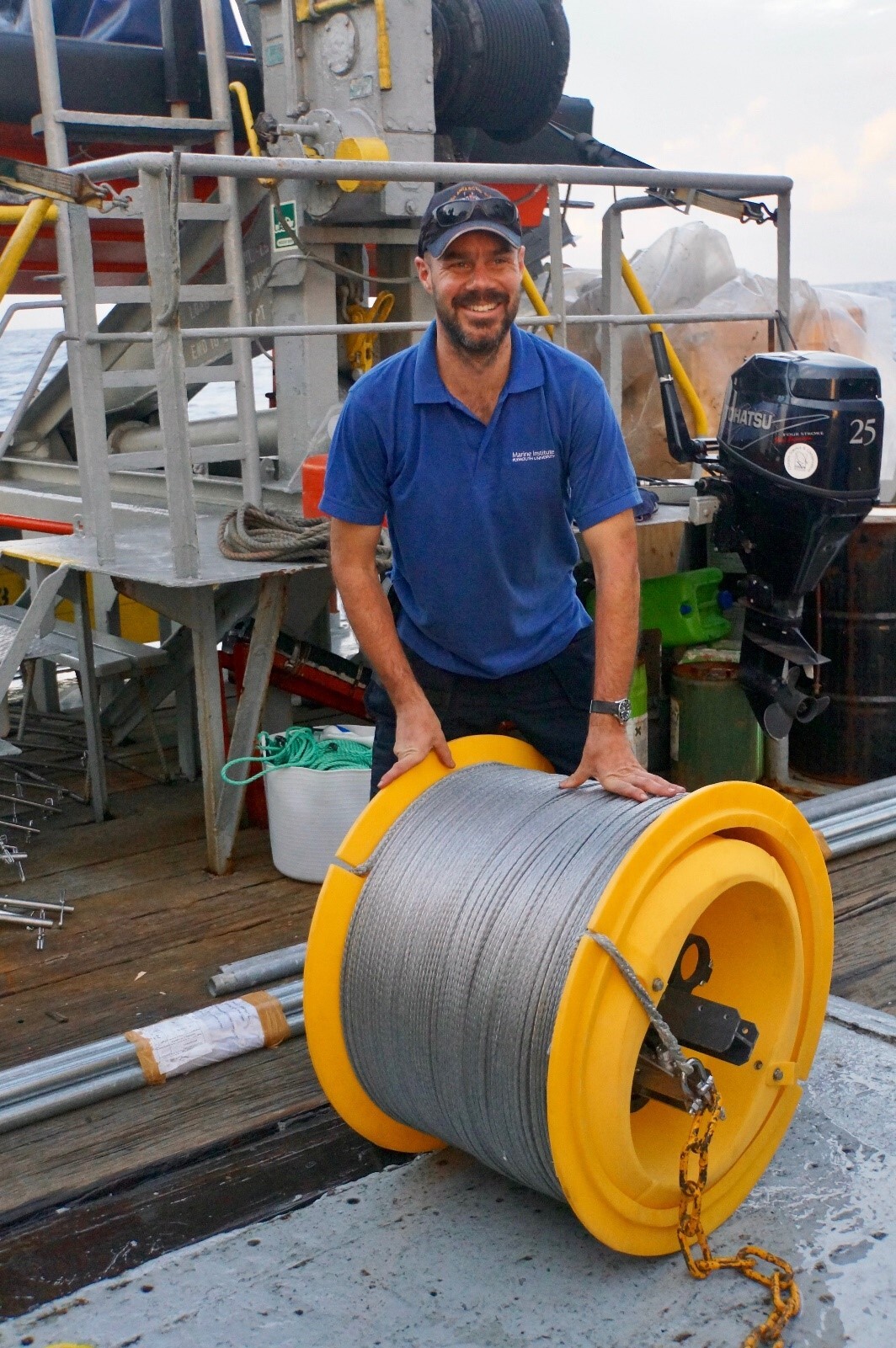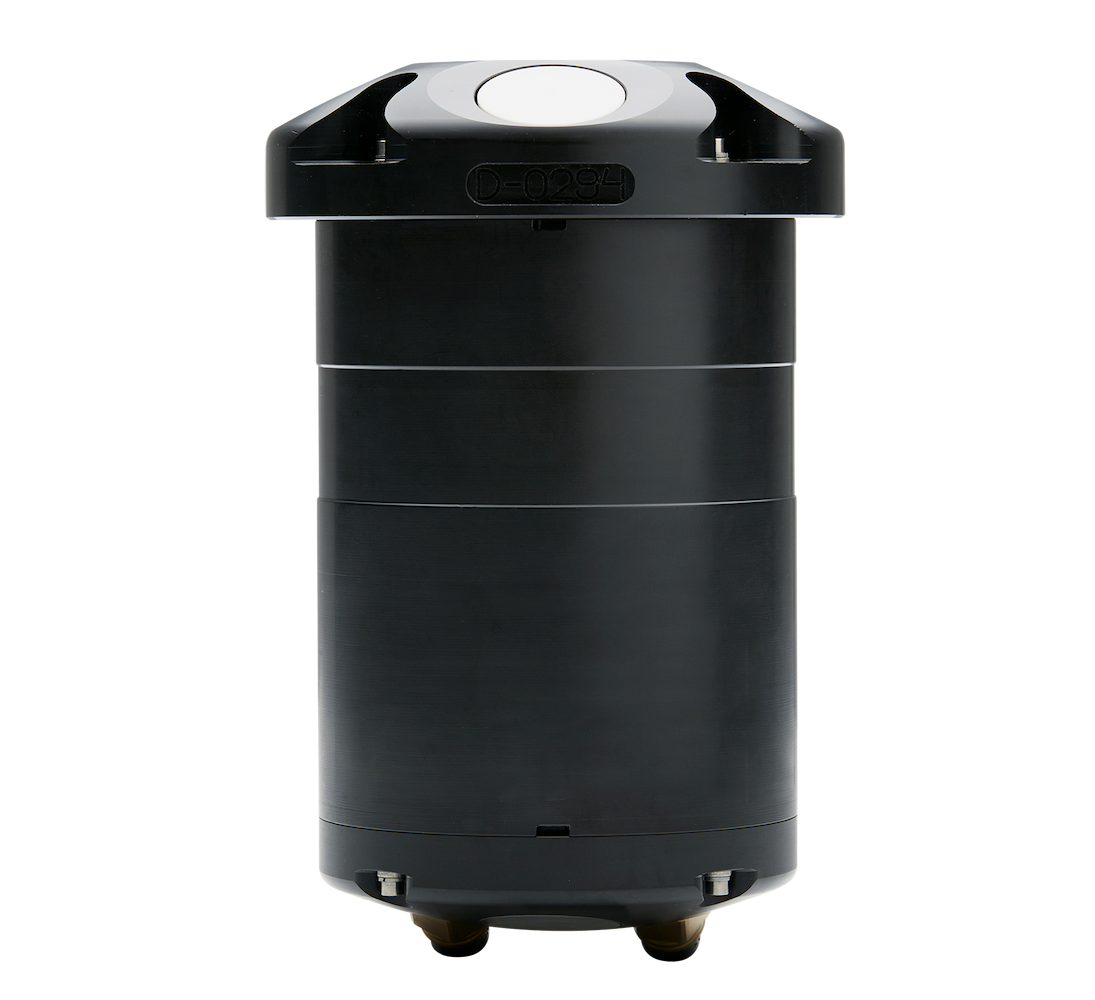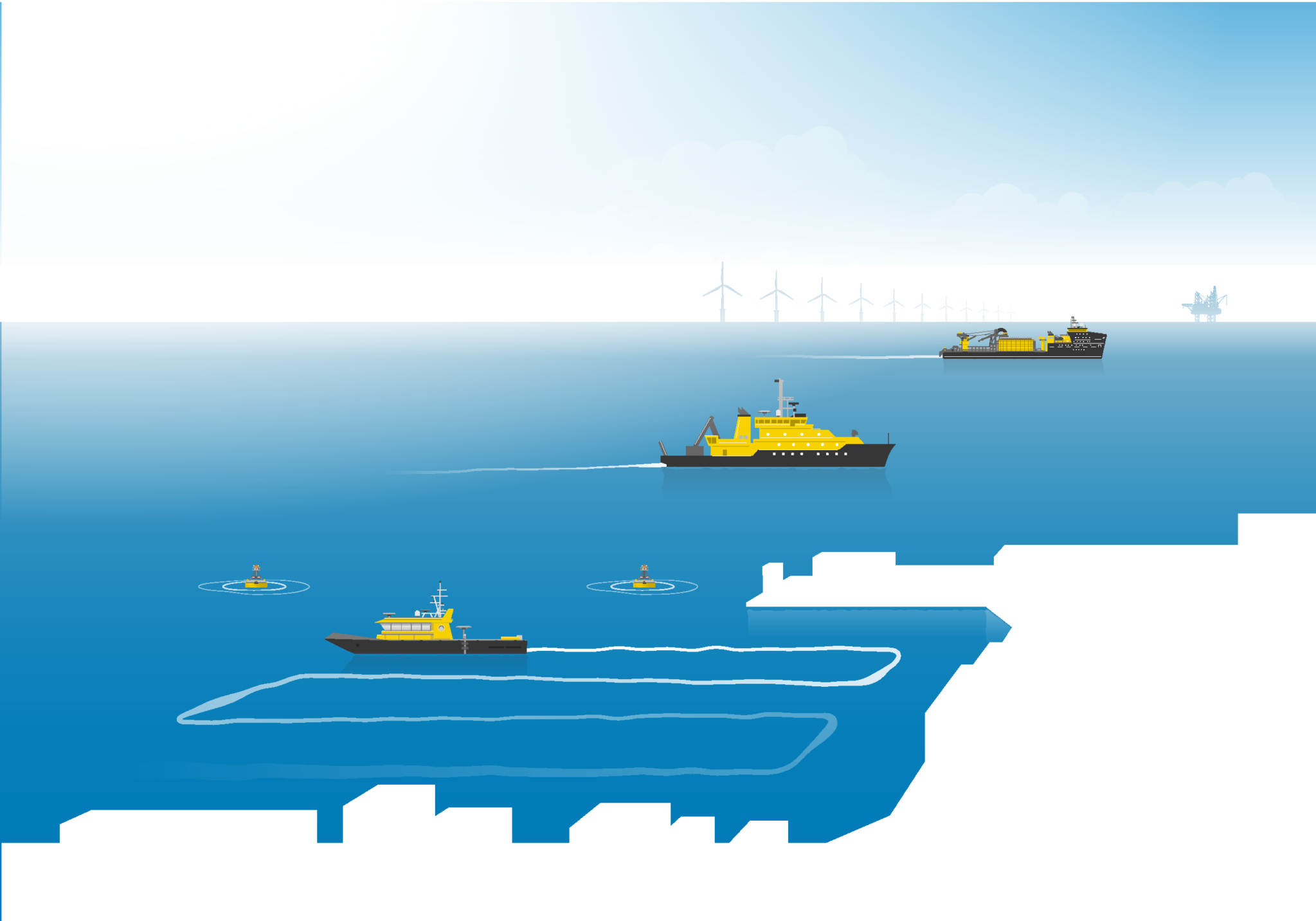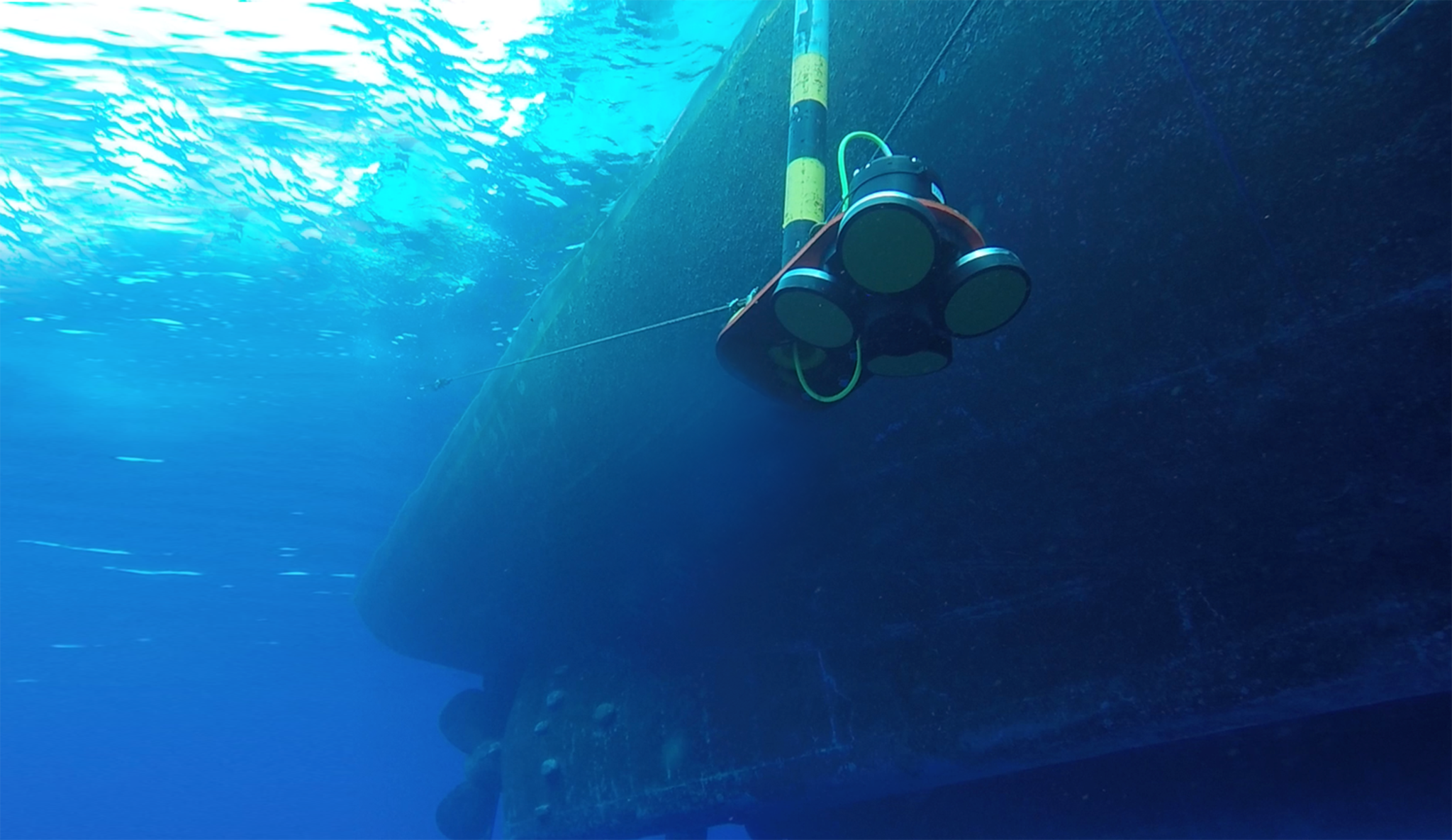
Current profiling at a marine biodiversity hotspot in the Indian Ocean
- User stories
Synopsis
Challenge
Researchers at the University of Plymouth are investigating oceanographic and biological processes around seamounts, areas rich with marine biodiversity.
Solution
Using both moored and vessel-mounted Signature ADCPs, the team collected current profiles in addition to echosounder data to inform on both physical and biological attributes in the area.
Benefit
The data from this research provide valuable insights on these previously understudied but ecologically important areas.
Complex currents and bathymetry in the tropical Indian Ocean bring nutrient-rich waters from the seabed towards the surface, where they are distributed across great distances and sustain the region’s diverse marine life.
The impact of the Seychelles–Chagos Thermocline Ridge – a seasonable upwelling of warm water in the tropical Indian Ocean – on large-scale circulation in the region is believed to play a crucial role in the stimulation of primary productivity. This influence on primary productivity and resulting fisheries extends between the central Indian Ocean and the west coast of Africa. The distribution of critical tuna fisheries towards the African coast are thought to depend on the process of nutrient dispersal, controlled by the Seychelles–Chagos Thermocline Ridge.
Studying large- and small-scale physical processes
The tropical Indian Ocean also includes one of the world’s largest “no-take” Marine Protected Areas. Here conservation measures have ensured that it remains a haven in which species can breed and thrive away from fishing efforts, a scheme which benefits the wider ecosystem.
Despite conservation efforts on unprecedented scales, some of the key oceanographic and biological processes at work in the area remain understudied. To improve the effectiveness of conservation efforts such as “no-take” zones, rigorous studies of the region’s large- and small-scale physical processes must be undertaken.
Dr. Hosegood’s previous work in the Maldives with the Signature 1000 made researchers realize the potential for ADCPs to be used in multidisciplinary studies. The study focused on physical and biological interactions in the Indian Ocean, specifically the feeding habits of manta rays.
Following the predators
Since 2015, a team from the University of Plymouth in the UK , in conjunction with the Garfield Weston Foundation, has been filling in some of the knowledge gaps through a series of research missions to the tropical Indian Ocean.
Led by Dr. Phil Hosegood, the team has been focusing on the area around seamounts – underwater mountains – where nutrients appear to be particularly abundant, indicated by the large number of marine predators present near seamount summits. Attracted by the high concentration of prey species, these predators include silvertip sharks and manta rays.
Satellite imagery shows numerous chlorophyll hotspots within the tropical Indian Ocean, particularly around seamounts. This reflects the presence of abundant organic material fueling these rich feeding grounds (Figure 1).
Chlorophyll (mg/m3)
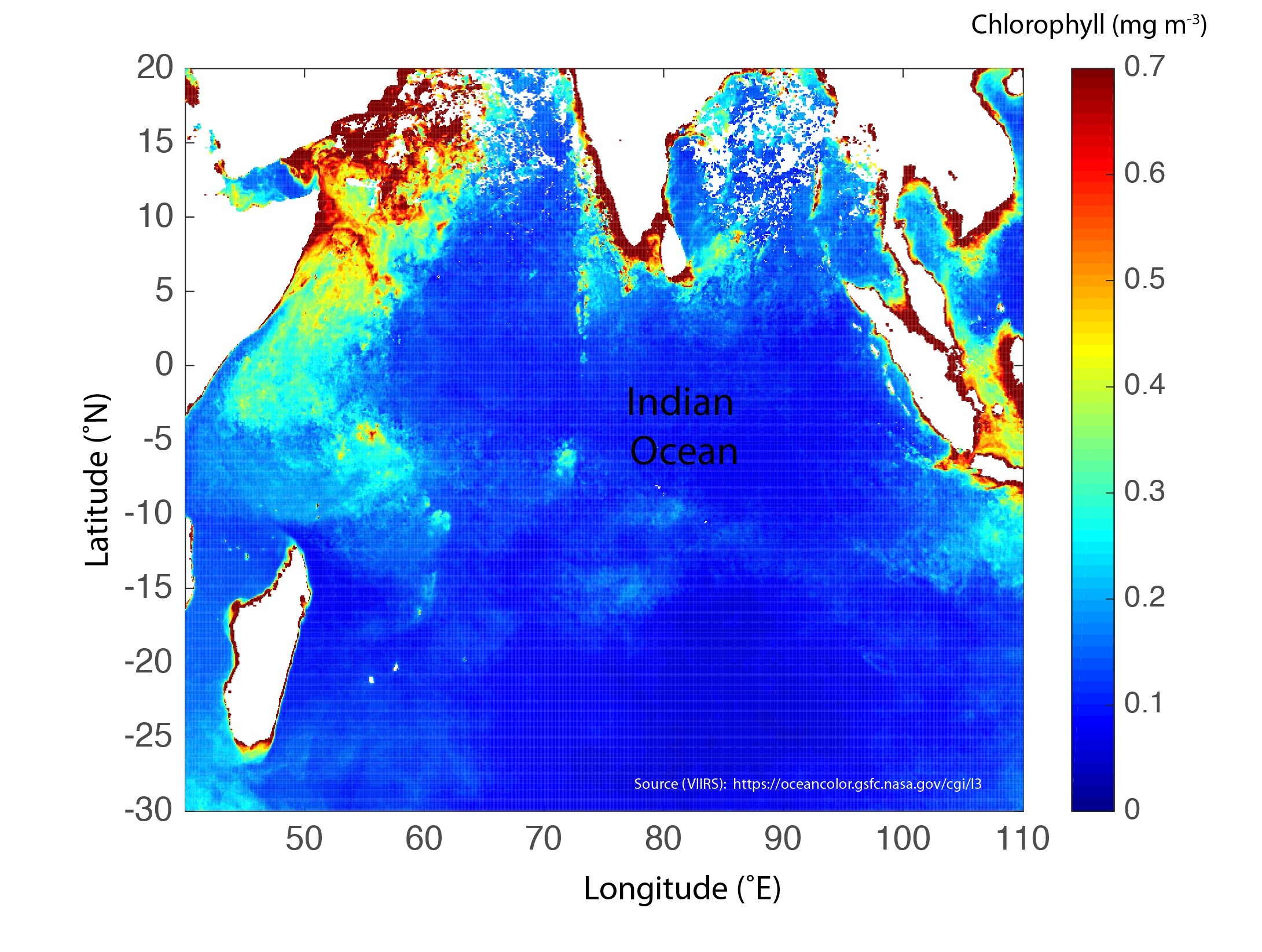
Investigating the link between deep-water currents and rich feeding grounds
One theory the team investigated was linked to phenomena known as Taylor columns. These are believed to be created when deep-water currents are deflected upwards as they collide with seamounts, bringing with them cold, nutrient-rich water. This “upwelled” water then forms closed-core eddies at the seamount summit, which trap nutrients and stimulate productivity.
The first field trip focused on one of two neighboring seamounts. The team knew from echosounding data and dives that there were aggregations of silvertip sharks in the area. Despite this, their location did not tally with the expected outcome of Taylor column processes.
If Taylor column forces were at play, then aggregations would be expected to be distributed evenly over the summit of the seamount, because nutrients attracting prey species would be trapped in the closed-core eddies. Instead, the greatest numbers of sharks – and prey species – were observed on the seamount flanks, at the drop-off (Figure 2).
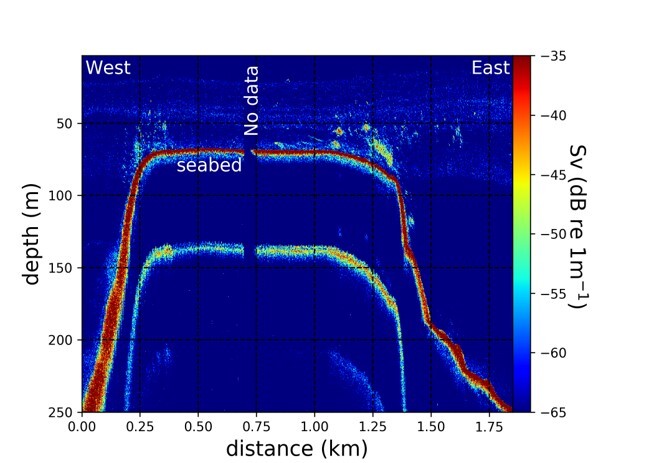
Initial findings from oceanographic mooring with ADCPs
To understand this contradiction, researchers placed an oceanographic mooring on the western flank of the first seamount. This mooring included temperature sensors spaced at 2 m intervals, with Acoustic Doppler Current Profilers (ADCPs) facing both up and down to track variations through the entire water column. This mooring was complemented by two full CTD (Conductivity, Temperature, Depth) transects over the seamount, separated by six hours to observe possible tidal influences.
CTD transects showed cold water spilling on to the seamount summit, coinciding with vertical transport of nutrients (Figure 3). Crucially, this flushing occurred over faster timescales than expected from slow, steady Taylor column movement. Meanwhile, nutrient-tracing experiments found that these “upwelled” nutrients were not trapped, instead being washed away from the summit quite rapidly – traveling 100–200 km in four days.
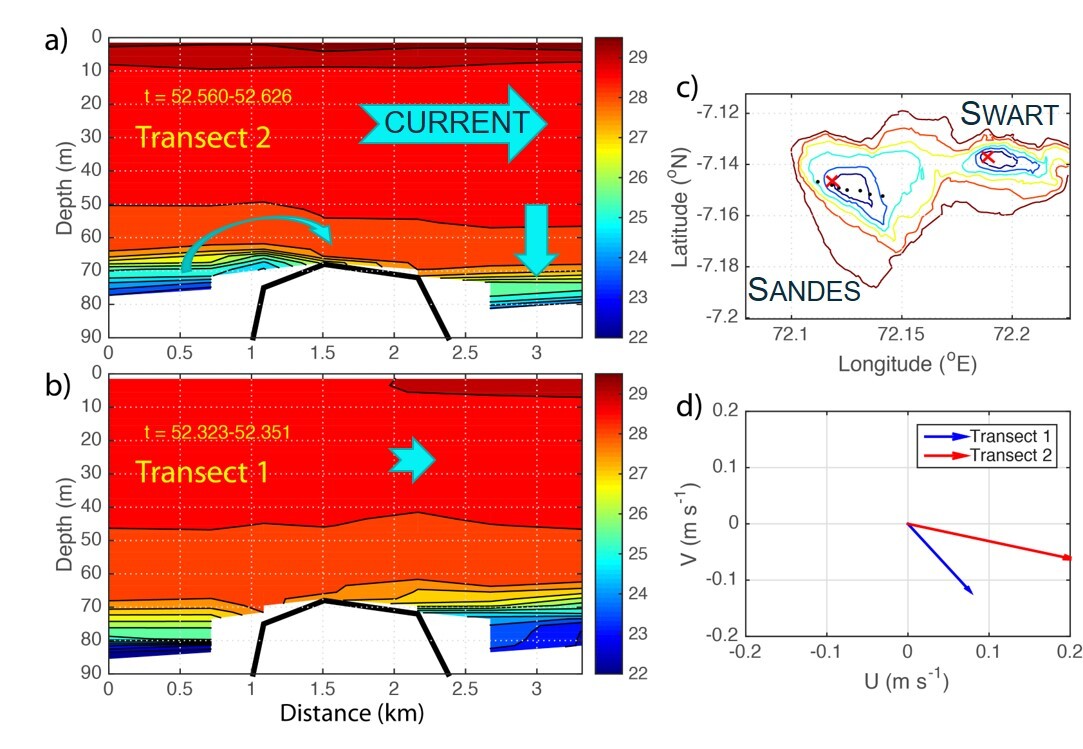
This high-frequency flushing, combined with a lack of nutrient retention, strongly suggested that Taylor columns were not the primary driver of biomass distribution over the seamount in question.
A new theory based on research with an ADCP mooring
So, with the influence of Taylor columns looking unlikely, what was going on?
Temperature profiles from the mooring on the western slope of the seamount showed 20–30 m isotherm oscillations strongly linked to the tidal cycle. These oscillations were noted alongside a peak in energy around 20 m above the bed with a period of five minutes. These findings were indicative of very high-frequency internal waves (i.e. waves within a fluid rather than on the surface). These can cause highly turbulent conditions, particularly when interacting with the seabed.
The team concluded that the steep slope of the seamount’s leeward drop-off caused internal lee waves to form over the seamount. This created a concentrated area of turbulence on the seamount’s upper flanks. As the tide slackened and reversed, these waves rebounded up the slope, bringing cold water back up the flanks. At the same time, turbulent activity resuspended material near the bed, feeding primary productivity.
This process is demonstrated in Figure 4, where we see progression of the depressed isotherms over the six-hour transect intervals.
A year later, researchers returned to carry out a comparative study over the neighboring seamount. Data from a similar oceanographic mooring deployed directly over the summit revealed the same process as was observed the previous year.
So, the team are now working on the basis that internal lee waves are generated by flow over the seamount, which are intensified by the steep bathymetry of the drop-off.
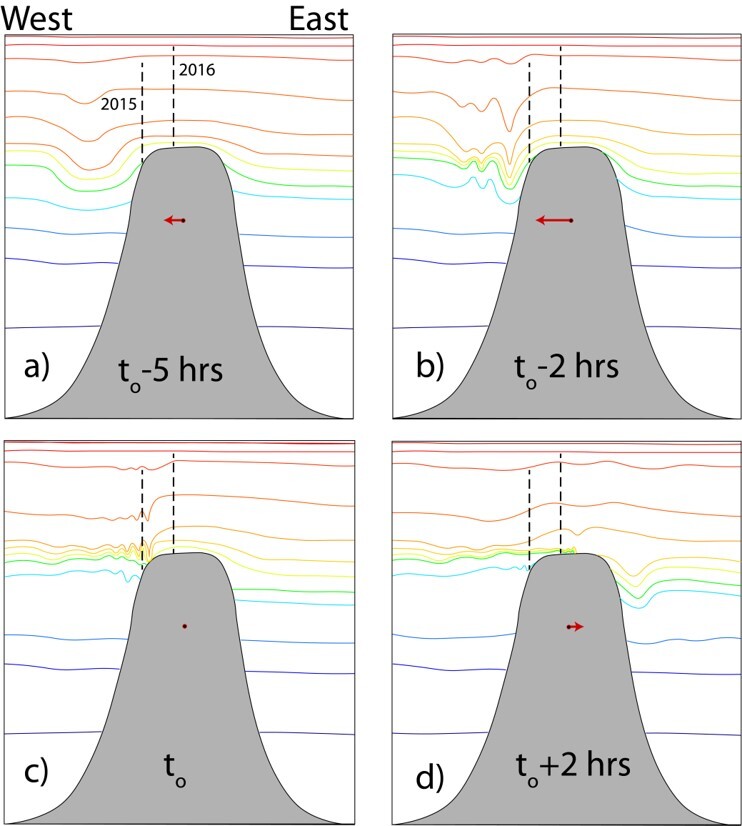
Multifunctional ADCPs helping researchers reach conclusions
Dr. Hosegood and his colleagues returned to the area in late 2019 to try to identify how internal waves shape the predator–prey interaction on the flanks of the seamount. They were also looking at how these processes influence vertical movement of coral larvae from deeper mesophotic reef systems.
To achieve all this with limited time and resources, multifunctional sensors were required to improve survey efficiency and flexibility. Nortek was able to provide these, along with a sensor developed specifically for this project.
The company was able to develop a highly efficient AD2CP system tailored for use in the most recent stage of this project. The AD2CP platform provides the unique ability to concurrently measure multiple parameters from a single platform, which is key to comprehensive observation of physical and biological interactions as they happen.
In total, ten oceanographic moorings were planned for this trip.
Two Nortek Signature 500 ADCPs were deployed on the seamount flanks to measure turbulence fluctuations and particle transport. Due to the steep slope, these were deployed using subsurface buoys which held the ADCPs above the uneven bed (Figure 5).
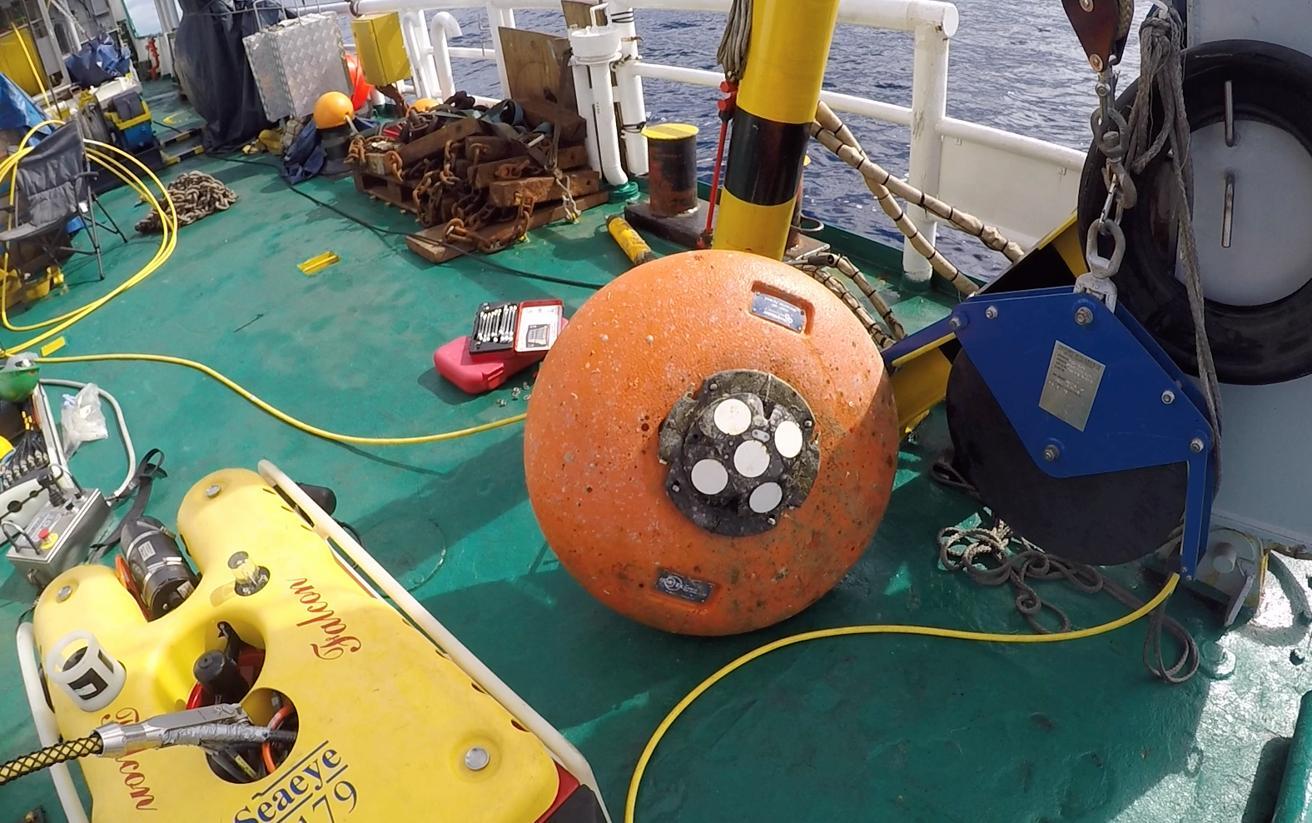
“The Signatures over the drop-off will be compelling in this as they give turbulence, which is critical for fish schooling, and also particle transport, which shows zooplankton movement. This can be correlated with hologram samples, while the ability to sample currents gives us three or four instruments in one,” said Dr. Phil Hosegood, speaking before setting off in 2019.
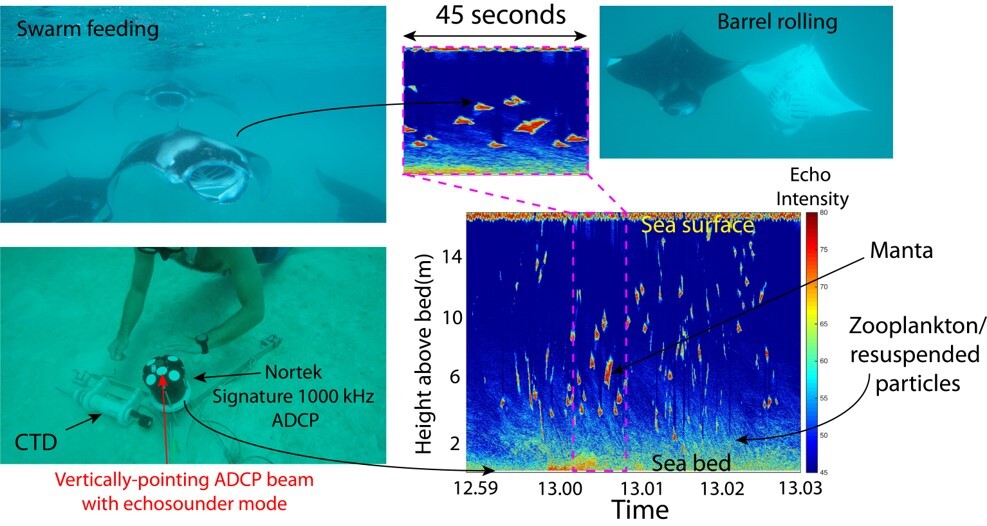
The Signature range’s vertical-beam echosounding facility is also a valuable asset, previously used to image zooplankton and manta ray feeding in the Maldives (Figure 6).
“Nortek’s echosounding mode is key to providing echo intensity, helping us to understand the kind of particle transport occurring in response to observed internal waves,” he added.
Meanwhile, two Signature 1000 ADCPs were deployed in the shallower waters over the summit to observe turbulence, sediment and biomass movements simultaneously. When processed and analyzed through Nortek’s Ocean Contour post-processing software, readings from these should help demonstrate the extent of trophic focusing of zooplankton over the summit of the seamount.
“The Signature 1000 will help to comprehensively demonstrate that trophic focusing of zooplankton over the summit is occurring, hopefully tying the whole story together,” Dr. Hosegood says.
These primary moorings were interspersed with several Aquadopp Profilers (both the 400 kHz version and the 600 kHz version), which provide background information on the overall current regime of the seamount.
A unique vessel-mounted ADCP gives greater understanding
Despite the insights provided by means of moored ADCPs and vessel-mounted echosounder transects, the lack of a vessel-mountable ADCP capable of profiling over the seamount dropoff limited the extent to which researchers could prove the interaction between predators, prey and physical phenomena. By measuring currents and biomass over the entire seamount summit, Dr Hosegood’s team would be able to obtain a “snapshot” of the physical and biological interactions occurring at a given moment in time.
This requirement led to the development of the Signature VM Ocean, an adapted version of Nortek’s Signature 100 ADCP. This new product is capable of profiling currents up to at least 330 m from the surface, allowing for a greater understanding of the deeper waters around the drop-off. The addition of a vertical multifrequency echosounder to the Signature 100 will help to identify the movement of predators and prey in relation to the internal lee waves identified in previous studies.
Having their first vessel-mounted, combined current profiler/echosounder will allow Dr Hosegood and his team to employ the most up-to-date technology available in expeditions to previously understudied locations around the world.
